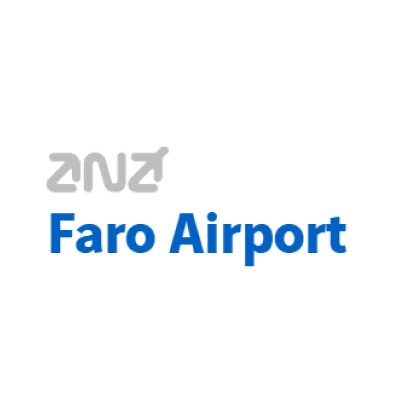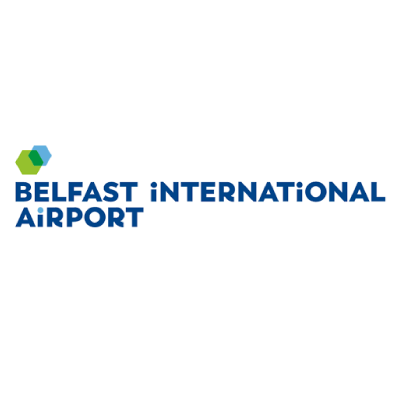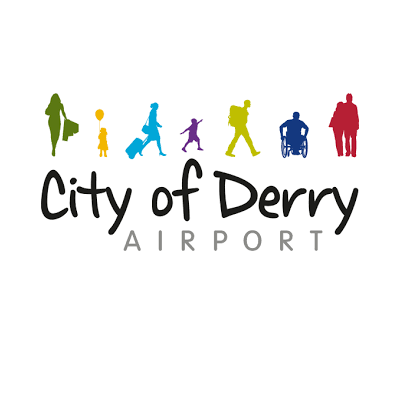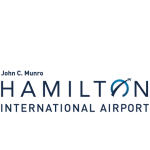Ongoing accelerated cultural change is having a significant impact on airports. Customer habits are transforming, and the airports that will thrive and grow are those that move along with their passengers.
Ecommerce retail and ride-hailing apps like Uber and Lyft have eaten into the revenue that comes from shops, restaurants, airport parking and car rental. According to ACI World, the share of non-aeronautical income in total airport revenue is currently at 39.9%. Prior to 2012, this figure stood at 45%. It’s time for airports to fight back.
Parking is one significant source of airport revenue that is seeing an impact from cultural trends. Personal car ownership is declining, and consumers are increasingly turning to ride-sharing services and public transport. A survey from Lyft claimed that nearly a quarter of a million customers ditched their cars in 2017 in favour of ride sharing.
Airport parking revenue is expected to fall further after the launch of autonomous vehicles, and many airports have responded to falling profits by implementing access charges. But that is not a long-term solution. Instead, airports need to embrace the changes, looking for new ways to generate revenue from their parking facilities.
Inside the terminal, ecommerce has taken a sizeable bite out of retail sales. As more people shop online it’s time for airports to explore new revenue streams by partnering with online retailers instead of competing with them.
How does non-aero make money for airports?
A 2018 report by Simple Flying shares a useful case study to illustrate the importance of non-aeronautical revenue.
London Heathrow Airport serves 78 million passengers every year on 650 flights every day. The annual running cost of the airport is nearly one and a half billion US dollars. In order to break even, Heathrow needs to generate $19 per passenger.
How does it do this?
Heathrow Airport receives a cut of every sale made by its on-site retailers. The contribution per passenger works out like this:
Restaurants = $0.95
Car rentals = $2.03
Retail concessions = $5.15
VIP lounges = $3.04
Heathrow Express (the high-speed train from the airport) = $2.15 per passenger.
This totals $13.32
According to Simple Flying, this represents one of the highest retail revenues worldwide. While it falls short of the required $19, Heathrow also receives around $29 per passenger from aeronautical revenues, which added to the retail total far exceeds the amount needed to break even, pushing the airport well into profit.
A future-proof strategy
While many airports have embraced non-aeronautical streams like food and beverage, the range of non-aviation income and business opportunities is wide, encompassing retail, parking, landside real estate and other services.
For airports to realise their full revenue potential, they must grasp the business opportunities offered by these areas. This should be a strategic step focused on consumer behaviour and expectation and resulting in resilient, agile airport operations.
The focus shifts towards digitally-literate customers who:
- Are confident comparing prices online to find the best deal
- Want meaningful, personalised experiences over products or brands
- Are happy to buy anytime, anywhere,
- Are frequently or constantly online and enjoy attention
- Are members of online communities
- Are strongly influenced by social media, peer pressure and social proof when it comes to spending large sums of money
The shift towards convenience has also overtaken airport operations. Airports are increasingly customer-centric, leading to the uptake of ongoing improvements and the integration of technology with the aim of creating a seamless, secure passenger experience. As technology such as VR, AR and AI is further exploited giving passengers more control and more choice, the customer will be able to tailor their entire journey when booking to fly and this will have an impact on the commercial areas of the airport.
Non-aeronautical sectors to consider
Parking
Car parking is the number one source of non-aeronautical revenue for regional and smaller airports and the second biggest at large international airports after duty and tax-free retail.
Car park booking has become sophisticated and customers can be segmented through pre-book processes, premium space parking, valet parking or membership and loyalty programmes.
The physical car parks can be outsourced to third-party operators who finance, build and operate them, sometimes in partnership with the car rental firms, but airports can gain strong advantages in terms of competition, marketing and revenue by taking charge of their own car park bookings.
Food and beverage concessions
According to International Airport Review, more than 50% of passengers eat and drink at food and beverage concessions in the airport. This places F&B as a major attraction rather than an afterthought in terms of both customer experience and revenue. Local brands bring individuality and colour to the airport terminal and superior quality is expected. Customers interested in experiences and stories want ethically sourced high-end food that offers a sense of luxury, integrating the idea of eating out in style into the airport journey. In a sense, the holiday begins in the terminal. This makes it necessary to allocate more space within the terminal to F&B concessions.
Or as HMSHost International’s Walter Seib said: “Eating is the new shopping.”
Advertising
It’s obvious that global brands will be attracted to the huge exposure offered by airports. Going back to Heathrow’s figures, that airport serves 78 million passengers a year – that’s 78 million ‘captive’ audience members for on-site advertising – and as airport traffic grows, advertising is expanding alongside it.
Airport advertising is also integrating into digital media and personal mobile devices, meaning there’s more flexibility and more opportunity for personalised messaging. Relevant, timely, destination specific, personalised up and cross sell offers can literally be beamed direct to the passenger via email or an airport app, and location services mean you can even notify a customer of a special offer as they walk past a particular shop within the terminal.
Car rental
Airport car rental generates between $1 and $4 per departing passenger, with the highest revenue seen in Europe, and America coming second. While airports are taking steps to consolidate parking, reduce traffic and make room to expand, larger airport facilities mean more space for car rental companies too. These companies are usually top brands such as Avis, Budget, Hertz, Alamo and Enterprise.
On-site hotels and real estate
Real estate is a huge player in non-aero revenue with options ranging from a simple office facility at a small airport to an entire ‘airport city’ complete with business and conference centres, hotels and even residential housing. Whether or not this landside real estate generates revenue depends on several factors:
- The availability of land within the airport perimeter
- The profile of the airport and its airlines
- The connectivity with the surrounding region
- Passenger profile
- The size of the surrounding cities
- The investment capacity and appetite for risk within airport operations
The most common (and most obvious) example of revenue-building airport real estate is the airport hotel. While the largest airports have been investing in and developing hotels for a long time, now mid-sized airports of between 5 and 10 million passengers are following suit. Some airports sell the land and share in the hotel revenue, but more frequently the airport is involved in an investor and developer role – a step that comes with higher risk but gives more control and greater revenue in the long term.
Rezcomm’s Travel Partners have unlimited access to non-aero streams such as flights, hotels, car hire, and cross-sell opportunities with parking, lounge and fast track. Find out more by getting in touch!
Currency exchange and banking
Cash is still king despite the convenience and integration of digital payment. Many travellers need foreign cash and currency exchange is big business. Another service offered by global companies like Global Blue, Travalex, Novacambios and Global Exchange is the reimbursement of locally paid VAT.
Get with the trends
Luxury goods retained their popularity throughout the ‘retail apocalypse’ of recent years that saw many big names file for bankruptcy. Affluent travellers from China (a market that is currently obsessed with ‘luxury’), the Middle East, Russia, India and Brazil continue to buy designer brands at airport stores. According to the CEO of Aeroporti di Roma, Ugo de Carolis, the average spend in the Rome Fiumicino luxury fashion precinct is €500.
At the other end of the spectrum travellers such as backpackers, older people, migrant workers and students can be overlooked by airports rushing to pick up the big spenders. A passenger on a smaller budget is often still interested in purchasing useful, affordable products, and can be eased into buying with the use of personalised promotions and special offers.
Another consideration is the overall impression that passengers gain from the airport experience. If food and beverage is perceived to be overpriced, as is often the case, customers will project this cost onto other products. However, if a cup of coffee is affordable, that signals to customers that duty and tax-free goods are also competitively priced.
Sustainability is another big trend in retail and food and beverage. Many big clothing brands are taking steps to increase transparency, and for eco-aware customers who are already impacting their carbon footprint by choosing to fly, locally sourced ingredients, ethical brands and the opportunity to offset are all valuable.
Pop-up stores
Pop up shops are a good opportunity to introduce fresh brands, products and ideas more often, giving a dynamic feel to your retail offering. They also create a good way to connect with advertisers who may not have a permanent store in your terminal.
Forward-thinking airports can look to the http://www.wearepopup.com platform for inspiration. We Are Pop Up is a service that connects space owners (whether it’s a shop corner, a retail unit or a single shelf) with innovative brands across fashion, art, beauty, education, F&B and community.
The digital revolution
The integration of digital into every day life is disruptive and exciting. It creates new business opportunities, new ways to communicate, different expectations and stronger connections. Today’s customer wants rich, informative content. Travellers want to share experiences and images. They buy high quality, ethically produced goods and enjoy luxury services, prizing convenience over almost every other consideration.
How to successfully engage with your airport customers
Get to know your customers
Almost half of airports worldwide know fewer than 5% of their customers. This leads to missed opportunities. Rezcomm’s combined platform for airport sales, marketing and customer-centric analytics means you get to know your passengers inside out. And they get to enjoy a hassle-free holiday with the ability to buy travel products and services all in one place.
Recognise and respond to changing demographics
The in-depth data and smart passenger profiling available as part of Rezcomm’s integrated system makes it easy to recognise changing customer demographics and buying habits and respond in real time.
Build an engaging experience behind every sale
The email automation and segmentation tools in Rezcomm’s software make it easy to offer an engaging personalised experience, make customers feel valued and build trust and loyalty.
Offer one-click micro-services
Increasingly airport apps are making it possible to offer services such as fast-track, walk-up lounge access and F&B ordering on a one-click basis, accommodating the customer demand for convenience. Rezcomm’s integrated flight and car park booking tools already walk the customer through the booking process in an intuitive way and with as few steps as possible. Consider implementing micro-services such as up-sell and cross-sell offerings to add value.
Augment reality to drive engagement
Airport apps combined with in-terminal location beacons can really boost the customer experience – specific F&B and retail outlets can be suggested on a personalised or search basis and the map function can literally walk the customer to the door.
In fact, augmented reality and visualisation goes a long way to smoothing the passenger experience. Rezcomm’s technology offers a full visualisation of car parking facilities including time-to-terminal so customers know exactly what they are booking and can see when an up-scale product might better suit their needs.
The future of airport retail
There is an ever-present threat of online retailers stealing airport business. Airports can respond by offering pre-ordering and home delivery of duty-free products, by developing unique airport brands and packaging, or by encouraging spend with loyalty schemes and frequent-flyer offers. However, rather than meet the ecommerce giants on their turf, a consistent strategy of personalised digital engagement and partnering with associates such as Amazon will ensure long-term growth.
Meanwhile, international travellers will always either enjoy the spectacle of airport shopping for its own sake or feel the need to offset travel stress with retail therapy. The future of airport non-aeronautical business is exciting with many opportunities to improve the customer experience, grow revenue and instil the identity of your airport as a destination in its own right.
Rezcomm is the partner of choice for airports worldwide. Our team are experts in accelerating airport revenue through smart, intuitive tech. If you have any questions about how you can use our integrated platform to grow your non-aeronautical revenue and future-proof your airport, contact us for a chat.






























